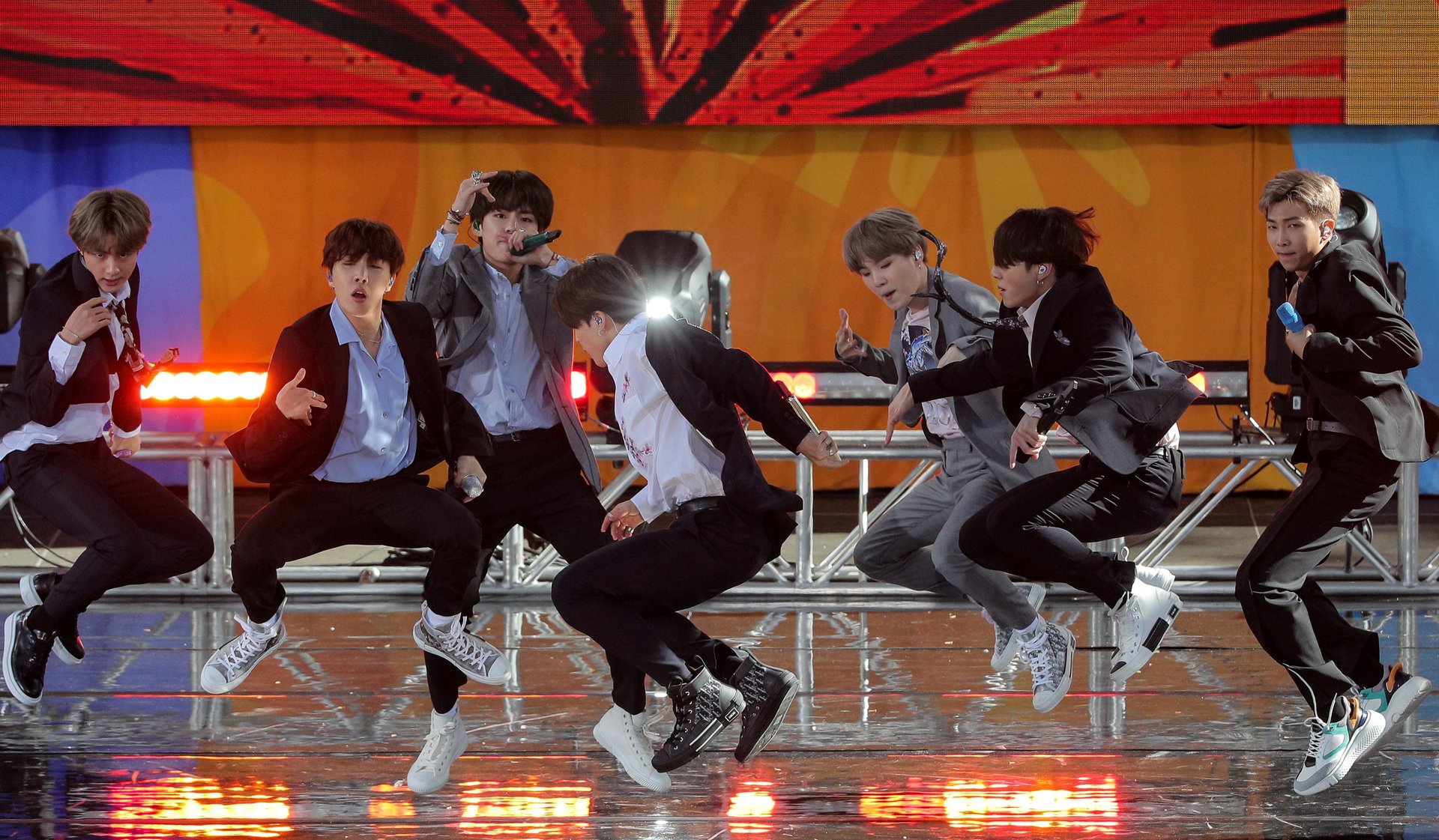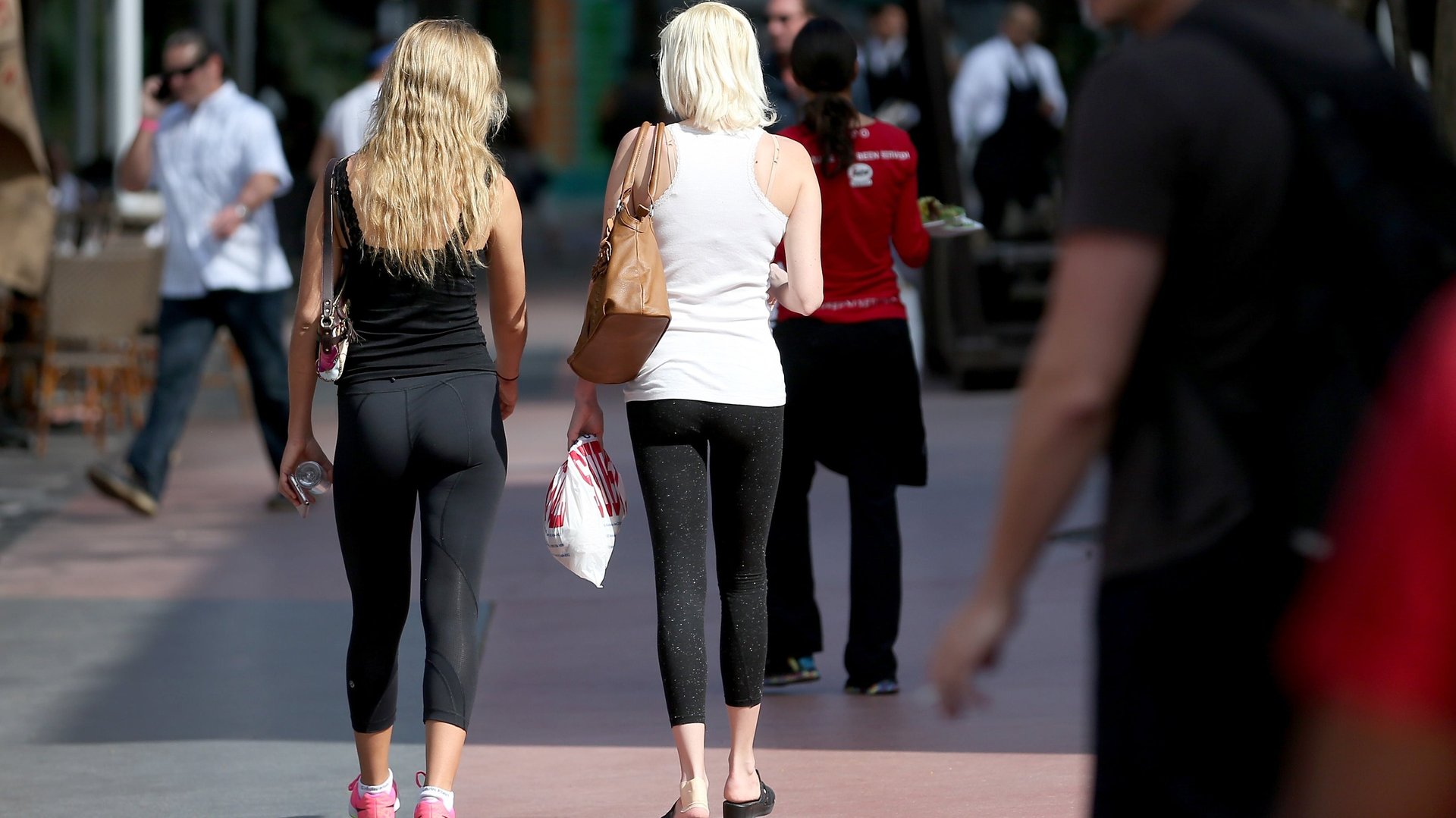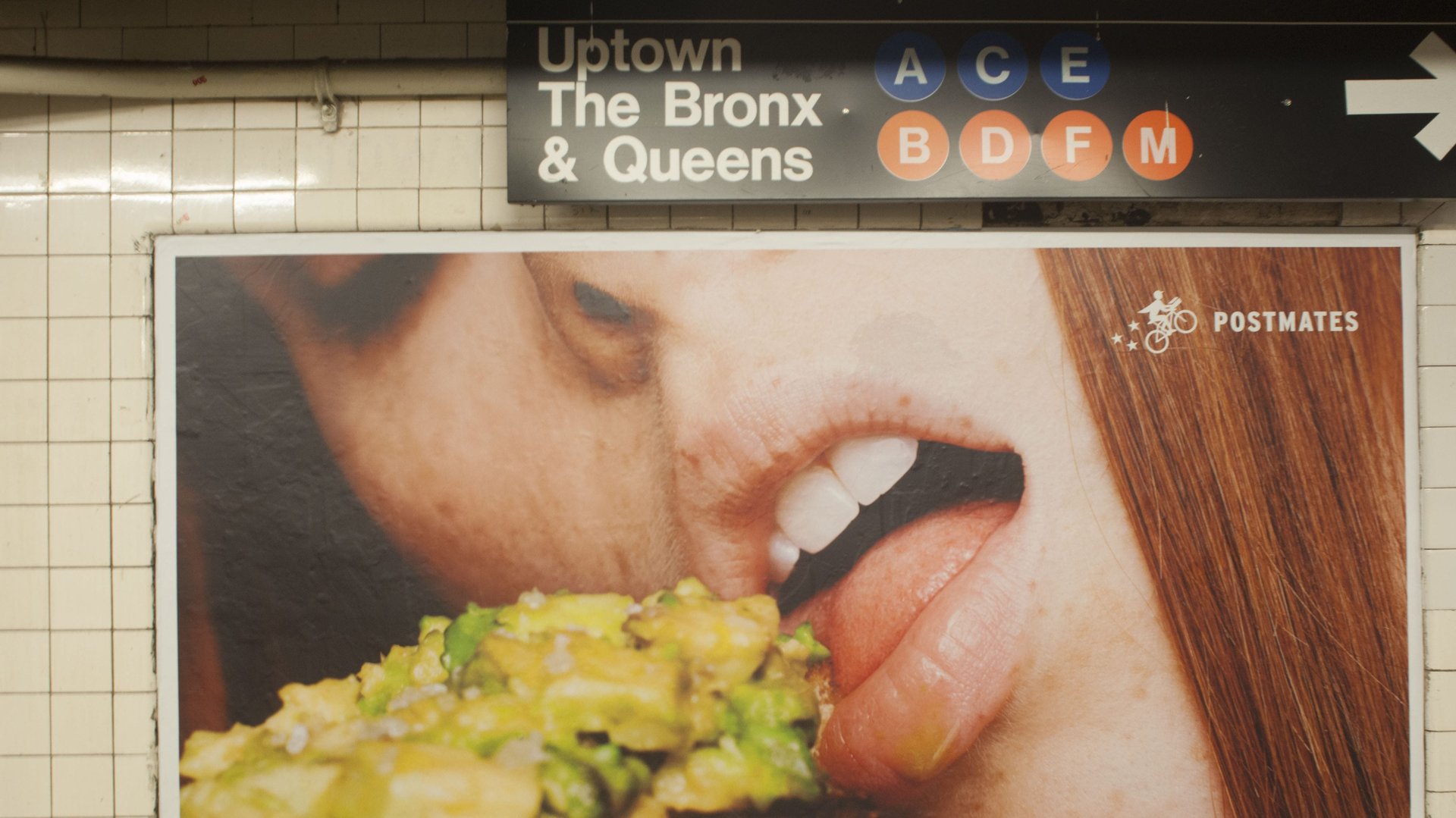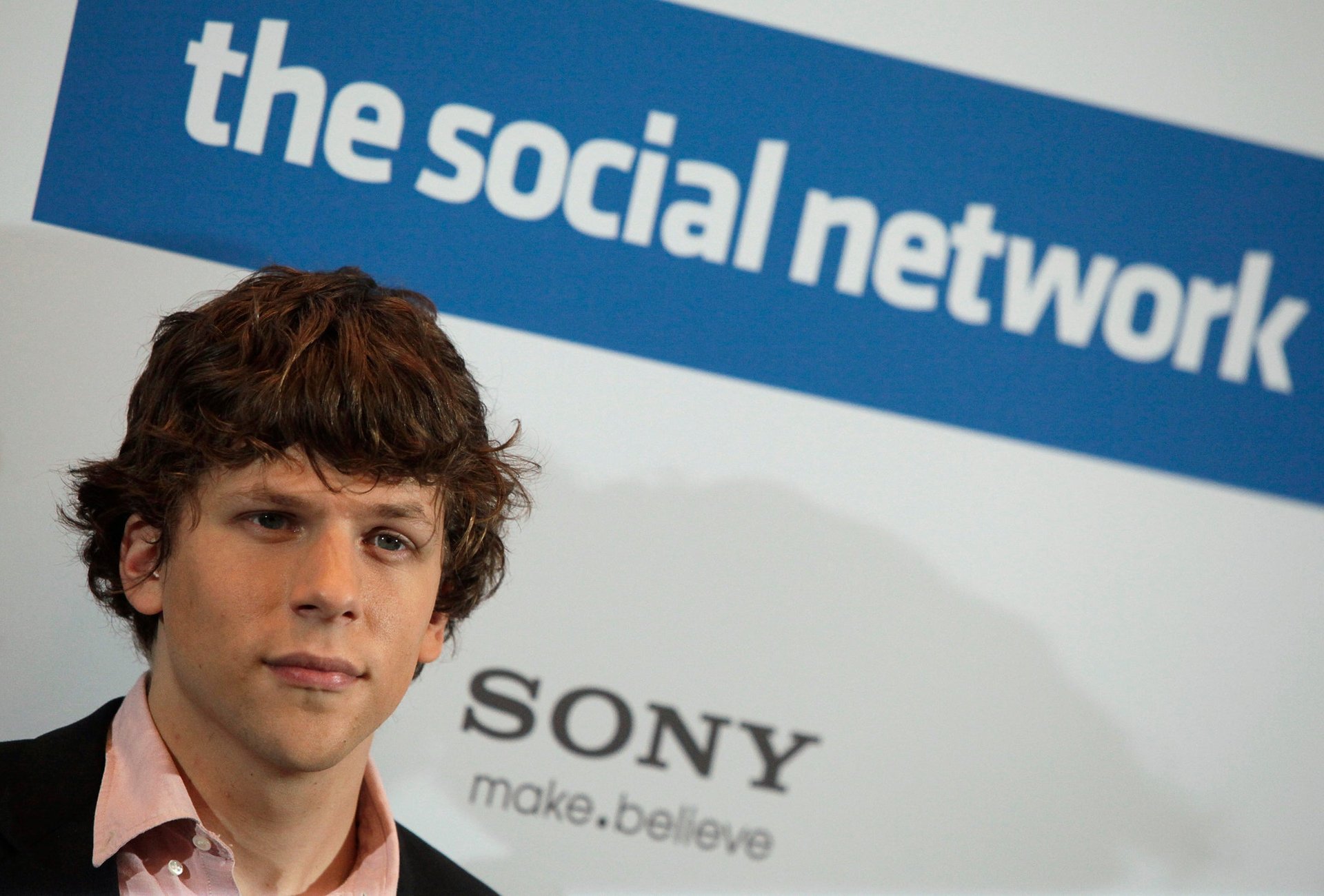The 2010s will be remembered as the decade of avocado toast and BTS
Decades only take shape with the clarity of hindsight. The artifacts that make a decade memorable don’t become obvious until long after it has passed.


Decades only take shape with the clarity of hindsight. The artifacts that make a decade memorable don’t become obvious until long after it has passed.
When we think about the 1970s, we think of disco, bell bottoms, and Jonathan Livingston Seagull. The 1920s we associate with flappers, the Charleston, and jazz. The 1980s were about Gordon Gecko, shoulder pads, and Michael Jackson. What will the future versions of us remember about the 2010s (and yes, we know the decade technically ends in 2020)?
It’s not simple popularity that makes a band, movie, or fashion memorable, although that helps. It also needs to be distinct, and to capture the spirit of the age. It helps if there is some quality behind it, too. The Monkees were wildly popular in the 1960s, but it was the Beatles that endured. Rihanna had the most No. 1 singles in the 2010s, with nine, but will she be better remembered than Lady Gaga, who had just two? Check back in 2069 to find out.
It’s not easy to predict how the future will view the past, but Quartz’s reporters have attempted just that, peering into our collective crystal ball to make our best guesses about 2010s nostalgia.
Fashion trend of the 2010s: athleisure

Before the 2010s, hardly anyone had ever heard the word “athleisure.” By the decades end, it felt unavoidable, and gained entry into the dictionary.
For better or worse, the perpetual post-gym look, most succinctly summed up in a pair of women’s leggings, is the one that will define the decade. It infiltrated malls, coffee shops, grocery stores, and Instagram feeds. It reached from Lululemon to Chanel to Rihanna. It reshaped denim, pressuring companies to inject ever-more stretch, even into Levi’s historic 501. The paradox of athleisure, of course, is it often wasn’t worn for anything remotely athletic: Witness the countless paparazzi photos of female celebrities in yoga pants going through airports or carrying lattes.
It also reflected a number of societal trends in the decade. Like wellness, athleisure is aspirational in its signaling of a healthy lifestyle. Deirdre Clemente, a historian of American culture focused on clothing, says it ties into the growth of exercise culture and the increasing body consciousness prompted by social media. She also calls it “the next phase of casual wear,” in that it represents a new stage in clothing’s century-long move away from formality and toward comfort. Not least of all, it epitomizes the rise of synthetic fabrics, which are taking over our wardrobes. —Marc Bain
Technology: smartphones
Although the iPhone first launched in 2007, there’s probably no device we’ll associate more with the 2010s than the smartphone.
Over the course of the decade, the mobile telephone shifted from a device that we could use to quickly communicate with others to the focal point of our lives. These pocket supercomputers have more power than the computer that sent Apollo 11 to the Moon, and better cameras than the bulky objects we used to carry around our necks on vacation. In some countries, the smartphone has become a hub for commerce, socializing, and organizing one’s life. In China, hundreds of millions of people use a single app—WeChat—to run their daily lives.
The platforms that companies like Apple and Google created with app stores are what truly revolutionized the phone: By allowing anyone to build programs on top of the powerful hardware in the phones, developers have been able to create apps that early manufacturers wouldn’t have even dreamt of. You can now get a date on Tinder, a ride on Uber, a job on LinkedIn; you can pay for your subway, open your hotel room door, and chat to everyone you’ve ever met, all from the tiny rectangle in your pocket. If Apple founder Steve Jobs once referred to the computer as “a bicycle for the mind,” then the smartphone must be a Harley-Davidson. —Mike Murphy
Book: 50 Shades of Grey
The 1810s marked the birth of Mr. Darcy. The 2010s gave us Mr. Grey.
50 Shades of Grey, 50 Shades Darker, and 50 Shades Freed, the trilogy released by E.J. James in 2011 and 2012, is unlikely to age well. Its melodramatic, kinky romance between recent college grad Anastasia Steele and mysterious mogul Christian Grey will never be taught in schools, and the books’ claim to fame is as much epically poor writing as it is bringing BDSM to the masses. But 50 Shades was inarguably a sensation—the trilogy sold more than 150 million copies worldwide—and James, whether critics like it or not, set off global conversations about sex, feminism, and the nature of publishing itself that will be remembered decades hence.
Beyond tapping into millions of readers’ thirst for mid-tier erotica, 50 Shades also epitomized two evolutions in book publishing. It was originally written as fan-fiction for Stephenie Meyers’ Twilight series, which concluded in 2008, and it arrived amid massive mainstream interest in young-adult novels more broadly (Suzanne Collins’ Hunger Games trilogy wrapped in 2010). When it exploded in popularity, 50 Shades solidified the idea that the next great book blockbuster could come from any genre, and be written by anyone.
The trilogy also may have been the first books whose popularity was enabled by e-readers. It’s a lot easier to read trashy novels when no one knows you’re reading them. —Kira Bindrim
Food item: avocado toast

More than perhaps any other dish, avocado toast is greater than the sum of its parts. This decade, it was at once social media phenomenon, meme-worthy punchline, lazy trope for general millennial fecklessness, and everyone’s favorite brunch. A high accomplishment for a slice of bread topped with a high-fat vegetable. (Let’s be clear here: The phenomenon may be of the age, but the combination dates back to at least the 1990s.)
But there’s more to it than that. In these infinitely customizable times, everyone had a spin on avocado toast. Food writer Nigella Lawson dubbed it “breakfast bruschetta” and threw on a cubed tomato. Musician Van Dyke Parks loaded avocado onto English muffins. World-weary chefs added chili flakes, lemon juice, poached eggs, dukkah, a sprinkle of herbs, Vegemite, chorizo, bacon, and many other unnecessaries, only sometimes always at once. Complicated ways to slice the avocado all but broke the internet.
Far more than they ate it or customized it, however, people talked about it. They came up with theories on it—it was the reason why millennials were poor, for instance, or the product of a world after the internet and NAFTA. They talked about it so much, they wondered why they were still talking about it. So did we all. —Natasha Frost
Wellness trend: CBD
Before 2010, only cannabis researchers and the most dedicated of potheads had heard of cannabidiol. Today, you can hardly swing a CBD-infused sports bra without hitting a product enhanced with the cannabis-derived compound, which sits at the very lucrative intersection of the $4 trillion wellness-industrial complex, the $15 billion US legal cannabis industry, and our culture of overworking. These CBD gummies, lattes, vapes, dog treats, lotions, capsules, tinctures, and potions are lauded for their apparent abilities to chill us out, both physically and mentally. Millennial burnout? Try CBD. Boomer aches and pains? CBD. Fido freaking out? CBD.
Kim Kardashian threw a “CBD-themed” baby shower, the fast food chain Carl’s Jr. topped a burger with “CBD-infused Santa Fe sauce,” and pro athletes including Terrell Davis have promoted it as an alternative to prescription drugs. While CBD has actual medical benefits—in 2018 the FDA approved a CBD drug for treating seizures in children—a regulatory grey area has made it ripe for hucksters to exploit. And so, it is everywhere. In 2016 CBD became more widely searched on Google than THC—the cannabinoid most famous for getting users high. It’s popularity may not last—in 2019, Google searches for CBD peaked—but it’s the trend we’ll most remember about the 2010s. —Jenni Avins
Film: The Social Network

Nobody thought a film about the founding of Facebook was a good idea. Instead, it will end up as the decade’s most essential film.
In 50 years, Facebook might run the world. It already controls the news and, for some, their relationships. So it seems likely that this superb film about the company’s humble beginnings will remain relevant—especially given how well it foreshadowed issues like privacy years before they were regularly making global headlines. In a decade dominated by comic book movies, The Social Network is the movie that emerged as the ultimate super villain origin story.
It worked—and still works—on many more levels than that. The Social Network is the story of technology run amok; of toxic masculinity; of venture capital bros; of the shortcomings of elite academic institutions; of social isolation; of powerful people with very thin skin.
As technology and social media change over the course of the 21st century, we’ll continue to reference The Social Network as a definitive account of what it was like to experience the 2010s. Even if Facebook does fade from memory, there will be some other platform—be it real or virtual or maybe it’ll be on Mars—run by someone who claims to be interested in the greater good but really just wants to feel needed and exert control. The scariest thing about The Social Network is that we’ve now seen that person can be any one of us, even if he wears a hoodie and flip-flops. —Adam Epstein
Cuisine: fusion food
In the 2010s, we threw caution to the wind and embraced a way of eating entirely in keeping with these global times. Want to brighten up vanilla ice cream? Chuck some Sichuanese chili-crisp on it. Making Mexican? Keep the gochujang handy. Eating literally anything? Probably needs some Sriracha.
Perhaps in opposition to an increasingly protectionist world, “fusion” food is borderless. It defies tradition and continental boundaries alike. (Sometimes it even defies common sense.) Fittingly, different incarnations of these recipes come from across the globe. British-Israeli food writer Yotam Ottolenghi, for instance, will happily add Asian-inflected fresh cilantro and star anise to a German noodle soup recipe or turn a chicken coconut curry into a more obviously British savory crumble. Stateside, chefs such as Danny Bowien turned diners on to kung pao pastrami.
Suddenly, everyone was a self-professed foodie—while the internet’s infinite repository of information meant that you were only ever a few clicks away from miso béarnaise, harissa ranch, or caponata with silken tofu. For millennials craving something “real,” snap-crackling dishes such as these sent weary synapses firing on all cylinders, while thumb after thumb hit the “save” button. —Natasha Frost
TV: The Leftovers
It might be counterintuitive to christen a TV series not many people watched as the most iconic of its decade. But no show captured the chaotic essence of the 2010s better than The Leftovers. Already a cult favorite and a critical darling, the HBO drama is destined to grow in stature as more viewers over time discover its unique power.
Set in the aftermath of an inexplicable event in which 2% of the planet’s population vanished into thin air, The Leftovers follows the remnants of one American family as it tries to pick up the pieces and move forward in a world they no longer recognize. It is an unexpectedly funny, achingly beautiful ode to human perseverance. It demonstrates, in 28 impeccably written and acted episodes, the importance of reaching out into the unknown in the hope there might be someone else reaching back.
No TV series has ever been more profound about the nature of grief. No TV series has ever been more fascinated by the mysteries of life, the quest to know the unknowable, the need to understand that which cannot be understood. The Leftovers gives us license to feel hopeful even and especially when it doesn’t make sense to be. Many who experienced the institutional failures and global upheaval of the 2010s know that feeling.
There were more popular shows this decade (Game of Thrones certainly comes to mind), but The Leftovers best represents the type of weird, audacious, diverse story that populated TV screens during the 2010s. —Adam Epstein
Music: BTS
BTS is the biggest band in the world. Formed in 2013, it took less than six years for the Korean boy band to sell over 10 million albums. BTS sold more albums globally than any other group in 2018, and is set to have another massive year in 2019. When people think back on the 2010s, they will think of this show-stopping, genre-bending band, and how it moved pop’s center of gravity towards Asia.
Like the Beatles or Michael Jackson before it, BTS caused hysteria nearly everywhere they went this decade. In 2019, the seven-member band sold out the 90,000-person Wembley Stadium in London in just 90 minutes, becoming the first Asian act to do so. They have also sold out shows in Brazil, France, and the US. Through openness about their struggles and anxieties on social media, the band has created an unparalleled connection with fans, who call themselves the ARMY.
Perhaps most importantly, BTS represents the shift away from the US as the center of popular music. China and South Korea joined Japan as top ten music markets in the 2010s, and the Asian and Latin American markets grew faster than the US and Europe’s. Although most of BTS’s songs are in Korean, the band’s music is made for a global audience. They borrow from Latin, Swedish, and American pop, and often rap and sing choruses in English.
BTS’s music is good, but not great. They are creatures of their time in songwriting and lyrics, and not particularly innovative. But if we remember the 2010s as the decade Asian pop went global, BTS is the band we’ll think of. —Dan Kopf